An exceptional all-rounder with one of the nicest displays on the market. Shame the price/performance balance means the smaller standard Galaxy S20 is more appealing
Both the Samsung Galaxy S20 and Galaxy S20+ are exceptional all-rounders, the problem is that, in a sense, they're too similar. Beyond a larger display, there's little reason to opt for the plus model over its more compact sibling, especially when doing so adds £100 to £200 onto the price tag.
Price When Reviewed
- $1199 (128GB) | $1349 (512GB)
The Samsung Galaxy S20 Ultra may be the spec-heavy monster that's making headlines but it's not the phone that the majority of people are likely to actually buy. Most will probably opt for the more conservative and comparatively more affordable Galaxy S20 and S20+. Here's our review of that plus-sized model.
Perhaps more than any previous generation of Galaxy S phones, the S20 and S20+ bring an almost identical user experience to the table, and as you'll find out over the course of this review, the hardware variations that are there make very little difference when it comes to choosing which one to buy.
Design – On The Edge
Dictated by an expansive 6.7in 20:9 aspect ratio display, the S20+ sounds like a big phone on paper and while there's no denying that its large display offers an expansive and enjoyable viewing experience, the phone's physical properties and proportions seem decidedly deceptive.
Through the combined effect of the phone's 186g weight, 73.7mm-narrow silhouette and svelte 7.8mm profile, it feels like a much smaller and less cumbersome device than you might expect. Samsung's eased the angle of the rounded edges of the display so one-handed use is unquestionably easier, although there were times when stretching my thumb across the screen still proved too much, leaving me wishing I'd opted for the smaller standard S20, with its well-proportioned 6.2in display, instead.
The general aesthetics of the S20+ don't deviate all that much from last year's phones, with a beautifully constructed sandwich of lightly rounded Gorilla Glass and metal, once again. It should be noted though that the S20 line, particularly in Cosmic Black, does seem to hold onto smudges and fingerprints more readily than most flagships in recent memory, so a case is advised.
The camera module moves to the top left of the phone's back and adopts a more imposing rectangular form - first introduced at the start of 2020 with the Galaxy A51, A71, S10 Lite and Note 10 Lite, which isn't as visually pleasing as the S10's central camera placement. Shifting the 'Samsung' logo down to the bottom does, at least, give the phone a more minimalist appearance.
Most people have had enough time to come to terms with the eradication of the 3.5mm headphone jack, however, the fact that this generation is the first of the Galaxy S line to formally nix the component does still sting a little. At least Samsung saw fit to include a decent pair of tuned AKG USB-C in-ear buds in-box.
One loss that isn't likely to cause any tears is the removal of the Bixby hardware button. Not only does this make for a cleaner overall design but Samsung now lets you program the power key to open any app, plus there are shortcuts like camera quick-access, which are appreciated too.
Other aspects of the design that aren't as readily apparent include IP68 dust and water resistance, along with support for 15W wireless and 9W reverse wireless charging, which will play nice with the new Galaxy Buds+ which Samsung launched alongside the S20 series.
Screen – Smooth And Stunning
Samsung has always graced its best phones with exceptional screens but the S20 line might well offer the best displays of any phone on the market right now.
While the 6.9in panel of the S20 Ultra is impressive, the phone is just too damn big for the average user, with the S20+ likely striking the best balance of size-versus-usability, for media lovers at least. So long as you're comfortable with the ergonomic trade-off and the slight drop in pixel density which the regular S20 can lord over its larger sibling, the S20+ still has a phenomenal display.
The WQHD+ resolution renders imagery with crisp detail, the HDR10+ certified Dynamic AMOLED 2X panel offers vivid colour reproduction (the phone is set to 'Vivid' mode out the box for extra pop) and superb contrast and, Samsung has now embraced higher refresh rates with the option of up to 120Hz viewing - resulting in exceptionally smooth visuals and motion that's ideal for movies and gaming alike.
Thought to be as a way of preserving battery life, the phone doesn't let you set both WQHD+ resolution and that 120Hz refresh rate to run in concert, so you have to make a choice. Personally, the jump from 60Hz to 120Hz is a more noticeable improvement and only lends to the phone's sense of responsiveness and speed.
The other aspect of the phone's display is the integrated ultrasonic fingerprint sensor. It seems like a reliable enough solution, but the technology hasn't really moved on from last year. It's not as snappy as some optical in-display or capacitive fingerprint sensors and the active area across which your print can be read hasn't been expanded either.
Camera – Fallacious But Fantastic Photography
The biggest difference between the S20 Ultra and its smaller S20 brethren is undoubtedly the camera setup. The Ultra shouts about its bombastic 108Mp main sensor and 100x "Space Zoom" while the standard S20 and S20+ make no such claims.
Samsung's official line is that both offer "3x Hybrid Optical Zoom", but after a little investigative work, it's clear the company is a bending the truth somewhat. We go into more detail about the true nature of the S20's zoom capabilities but the most important takeaway is that despite any perceived deception on Samsung's part, the cameras on these phones are still superb.
Shooting with the S20+'s main camera (above), ultra-wide and 3x hybrid zoom (below)
The setup relies on a primary 12Mp main sensor, accompanied by a 12Mp ultra-wide and a 64Mp "telephoto" (note the quotation marks). The plus model also sports a depth sensor too but in truth, we've seen little benefit to its inclusion when looking at side by side shots from the standard S20, which lacks this additional ToF completely.
Standard imagery is typical Samsung, with great detail, colour and contrast, all of which have been pushed beyond natural limits ever-so-slightly (Samsung's image processing is a lot more subtle than it used to be).
It's advised to disable the camera's Scene Optimiser if you don't like the extra punch Samsung places on images
The main sensor captures the best overall shots but you do have the option of capturing 64Mp stills too if you want to prioritise detail over dynamic range. Shots at 3x magnification also retain a pleasing amount of clarity, but when you crop in you can see where software is working to try and uphold image fidelity.
Samsung has greatly improved its Bright Night low-light shooting technology to the point that the S20+ now vies with the likes of Google's Night Sight and the iPhone 11 line's Night Mode.
Low light shooting (above), Bright Night mode (below)
Beyond granting the phone its zoom capabilities, that 64Mp sensor also enables one of the S20 line's headline features: 8K video recording. While it's an undoubted technical achievement, the reality is that the phone's 4K video recording (at up to 60fps) is so much more usable and capable.
Shooting in 8K results in large files that lack consistent autofocus and still undergo a notable degree of compression. We shot our whole Galaxy S20/S20+ unboxing in 8K using the S20 Ultra, which gives you some idea of what the Plus is capable of.
Performance – A true all-rounder
The S20 line continues to exist in two discreet forms, distinguished by the processor at their respective hearts. In markets include Europe and the UK you're more likely to encounter the Exynos 990 version, while the US model sports Qualcomm's best and brightest Snapdragon 865 chipset.
This shouldn't make much of a difference to performance, with the Exynos models we tested delivering consistently high results, that were only trumped by the likes of the iPhone 11 Pro in CPU performance specifically.
Battery
One area where there is definitely going to be a deviation is with regards to longevity. As with previous Samsung flagships, the Snapdragon models have consistently delivered better battery performance over their Exynos-laden counterparts and depending on which reviews you read, you'll see that battery life is either commended or simply remarked upon as 'acceptable', based on the chip at the review model's heart.
The S20+'s longevity is best described as competent, likely lasting most users a day without worry, doling out almost eight hours of screen-on time using the out-of-box display default of Full HD+ resolution and a 60Hz refresh rate. As mentioned earlier, you can choose to up either of these to WQHD+ resolution or 120Hz respectively and in real-world testing, the latter (and better option of the two, in my opinion) resulted in 5% to 10% less battery drain within the same time frame.
Samsung deserves a huge pat on the back for the fast-charging technology at work in the S20 series, for one thanks to its consistency across all three models, but also it goes to show that higher wattage does not a faster charge guarantee.
The phone comes with a PD-compliant 25W fast-charger in-box and in testing consistently refilled the phone's capacious 4500mAh battery in just over an hour, with 56% charge achieved in just 30 minutes. Samsung has also managed to even out the charging curve, meaning the S20+ will reach 100% quicker than rival phones with smaller battery capacities and higher wattage chargers (phones like the OnePlus 7T Pro).
5G
While Samsung released a dedicated Galaxy S10 5G device last year, for 2020, the entirety of the S20 line offers support for the newest super-fast mobile data speeds by default. There are some variations to this trait depending on the market you're buying in, with the US delineating the S20's 5G from the S20+ and Ultra's 5G by only granting it sub-6 support (while the other two also accommodate mmWave).
In the UK, the split is a little clearer - all three models come with 5G as standard, you can opt for a 4G-only Galaxy S20 (for £100 less) if you aren't ready to jump onto a 5G plan but where the plus model is concerned there's only one SKU to consider and it features 5G, whether you plan on using it or not.
Moreso a symptom of the relative youth of the nation's 5G infrastructure than any failing of the Galaxy S20+ itself, right now 5G just isn't readily available. Testing on Vodafone's network throughout London, speeds varied wildly, with the phone sometimes stating that it was connected at 5G speeds but producing results far below what one might expect.
In this regard, the Galaxy S20+ is at least well future-proofed and will be able to leverage ever-improving 5G networks over the average two or more years you're likely to use the phone.
Software – One Feature 2 Many
The user experience here is unmistakably Samsung, with the company's One UI 2.1 running atop Android 10. To its credit, it does a good job of ensuring a lot of its native experiences are accessible for one-handed usage and while there is definitely a degree of pre-loaded bloat and a handful of duplicate apps, the company has at least made it easier than ever to hide or uninstall its own experiences, which can then be re-downloaded from the Galaxy Store (Samsung's apps store) as you need them.
Improvements have been made to make Bixby less intrusive, while still being able to deliver pertinent information with a swipe right from the main home screen, while gesture-based navigation is now the default (but can be changed) bringing it more in line with stock Android.
Aspects like the settings menu and quick settings panel do look a little intimidating out of the box but you do at least have the option to tweak and tailor much of the phone's layout and interaction behaviour to suit your tastes.
Price – Big Phone, Big Price Tag
Not long ago, people baulked at the idea of paying £1000 for a smartphone but with a stagnating market and expensive new technologies like in-display sensors and 5G now on the scene, pricing beyond this 1K limit isn't all that uncommon in the flagship space.
Unlike the standard Galaxy S20, where you have the option of keeping costs down by forgoing 5G altogether, there's no such choice when it comes to the Galaxy S20+.
For the £999 asking price, there's no denying that this phone is feature-packed and more than equipped to last most users the average two-year contract. But unless you need that extra screen real-estate afforded to you by the plus's larger panel, you'll get everything that the S20+ brings to the table in a more compact and more affordable (albeit still high-priced) package from the standard Galaxy S20.
Verdict
There's no question that as a range, the Galaxy S20 line delivers a strong all-round experience that means Samsung will likely retain its place as the go-to Android phone maker.
The similarities between the standard Galaxy S20 and the larger S20+ are so negligible, however, that unless the extra 0.5 inches of screen are of paramount importance to you, you'll likely prefer the size and comfort of the standard model, not to mention the lower price.
Specs
- OS: Android 10 w/ One UI 2.1
- Display: 6.7in 120Hz 20:9 QHD+ (3200x1440) Dynamic AMOLED 2X display
- Cameras: 12Mp main, 64Mp telephoto, 12Mp ultra wide, 0.3Mp TOF 3D
- Front camera: 10Mp
- Processor: Exynos 990 or Snapdragon 865 (market dependant)
- Memory: 12GB RAM
- Storage: 128GB/512GB UFS 3.0 (market dependant)
- Expandability: microSD up to 1TB
- Battery: 4500mAh w/ 25W fast (wired), 15W wireless, 9W reverse charging
- Connectivity: Bluetooth 5.0, 5G (market dependant)
- Protection: Gorilla Glass 6, IP68 certified
- Colours: Cosmic Grey, Cloud Blue, Cloud White, Aura Red, Cosmic Black (market dependant)
View the original article here

















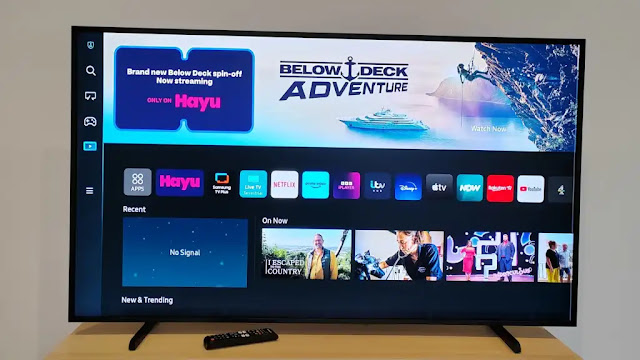
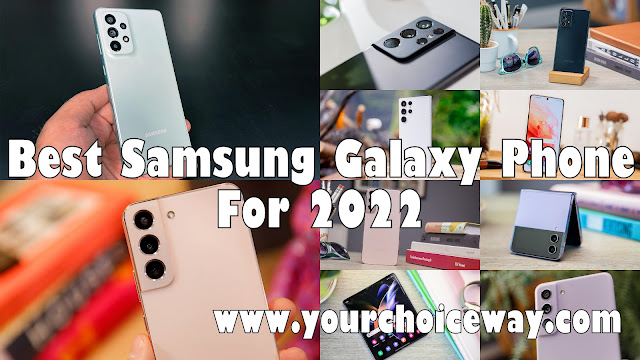
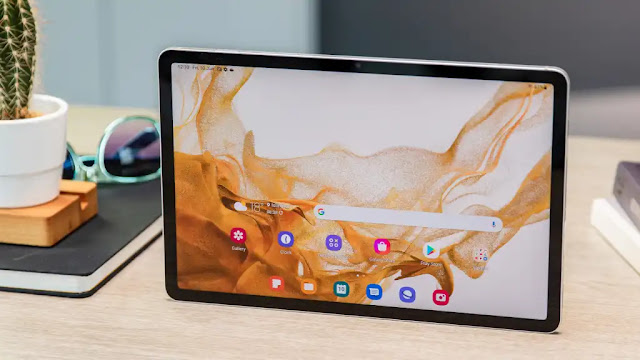





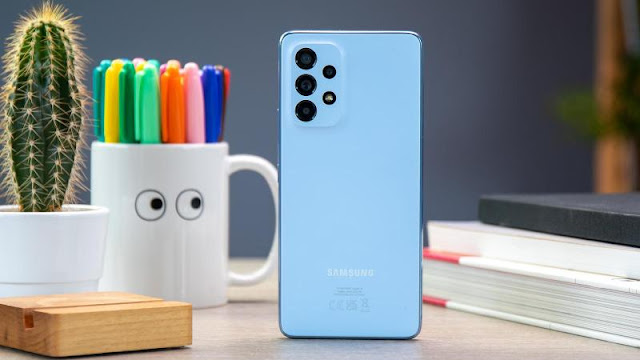
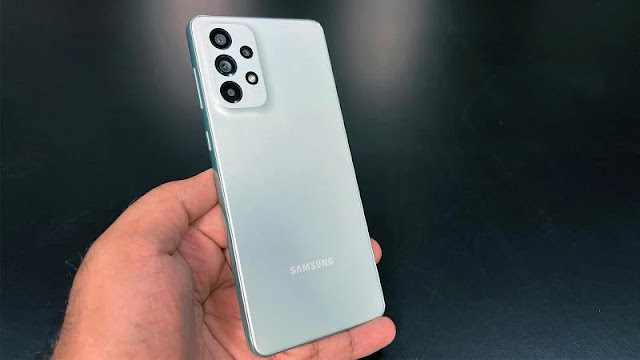

0 comments:
Post a Comment